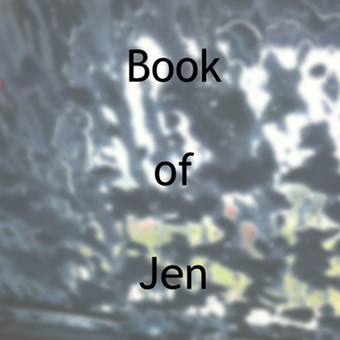 Slim MacKenzie (known by some as Carl Stanfeuss) has a gift that can also be viewed as a curse. His strangely colored “Twilight Eyes” are a sign of psychic ability. They allow him to see through the human disguises of hideous creates that he calls Goblins. He is in a self-imposed mission to kill them all. There are times when he wishes that he had a different gift – such as the gift of healing that his mother has.
Slim MacKenzie (known by some as Carl Stanfeuss) has a gift that can also be viewed as a curse. His strangely colored “Twilight Eyes” are a sign of psychic ability. They allow him to see through the human disguises of hideous creates that he calls Goblins. He is in a self-imposed mission to kill them all. There are times when he wishes that he had a different gift – such as the gift of healing that his mother has.
Slim, who is only 17, has run away from home after killing an uncle (who was really a Goblin). His adventure leads him to join the Sombra Brothers carnival, which travels from place to place. Oddly enough, Slim notices that many Goblins are among the patrons.
One of the best things about this book is the vividness of what life is like for those who had joined the carnival. Slim ends up working for a beautiful, but troubled, young woman named Rya Raines. As the story goes on, it becomes clear that they are remarkably well suited for each other. I’ll leave the reader to discover more about their compatibility. For now, all I will say is that they have each been through some bad experiences that most people would not be able to relate to.
I liked the way Koontz described the different parts of the carnival: the games, the rides, the constant calling of the barkers who try to attract “marks” into their tents. Koontz even offered details like the types of food that was available, the colored pennants that hang over everything, and the difference between the carnival when it is open and after it has closed for the night.
I found the life of the people who worked at the traveling carnival to be interesting. Slim soon discovers that even though some of the people look strange (especially the side-show “freaks”) they actually are good people. The carnies are slow to trust newcomers, but once they do, Slim becomes part of a large, unconventional, family.
Early on in his new career, Slim is asked to accompany Jelly Jordan, the man in charge of the carnival, to Yontsdown, the town where the carnival will go next. They are accompanied by Luke Bendingo, a driver who stutters uncontrollably. On the way, Jelly Jordan informs Slim that he should expect trouble, and possibly a fight.
Not long after entering Yontsdown, Slim discovers that the majority of the people who are in positions of authority (including the police) are actually Goblins. Previously, Slim believed the Goblins were randomly causing misery and suffering just for their own pleasure. Yontsdown shows him that the Goblins were much more coordinated than he expected – and this news is greatly upsetting.
The other thing I really liked about this book was the Goblin “culture” (for lack of a better word). Koontz paints a grim picture of how the Goblins came to be, what they are up to, and why they constantly seek to cause humans as much physical and emotional distress as possible. The level of details that were included in this aspect of the story, and that slowly trickle out to the reader as Slim learns more about the Goblins, is fascinating.
The Goblins are not some relatively dumb monsters that are convenient to have the hero kill off, one by one. Instead, these creatures have a long history, deeply embedded reasons that explain their motivations, and what almost amounts to a religion.
Twilight Eyes is made up of two parts. The first part was the original story. The second part was written later, mostly because Koontz “couldn’t stop thinking about Slim, Rya, the carnies, and their war with the Goblins” (as he explaines it in the Afterward).
Personally, I found myself wondering about what it would have been like to travel with a carnival in the year that JFK was assassinated, in a world where smartphones didn’t exist and few people checked IDs before hiring someone. The scenes where the carnies were taking apart the carnival so they could move to the next location reminded me of a summer I spent helping out a local festival. Everyone worked long into the night to take everything down, and store it away, on the last night.
The Goblins in this book are sadistic and cruel, but not one-dimentional. In the end, the big concept I came away from this book with was the unnerving reminder that some people are not as kind and good as they appear to be. The Goblins that Koontz created surely don’t exist – but that doesn’t mean that the real world is free from monsters that desire to prey on others. That alone is enough to send a chill down anyone’s spine, and it greatly enhanced the story.
This book review of Twilight Eyes – by Dean Koontz is a post written by Jen Thorpe on Book of Jen and is not allowed to be copied to other sites.
If you enjoyed this blog post please consider supporting me on Patreon or at PayPal.me. Thank you!
